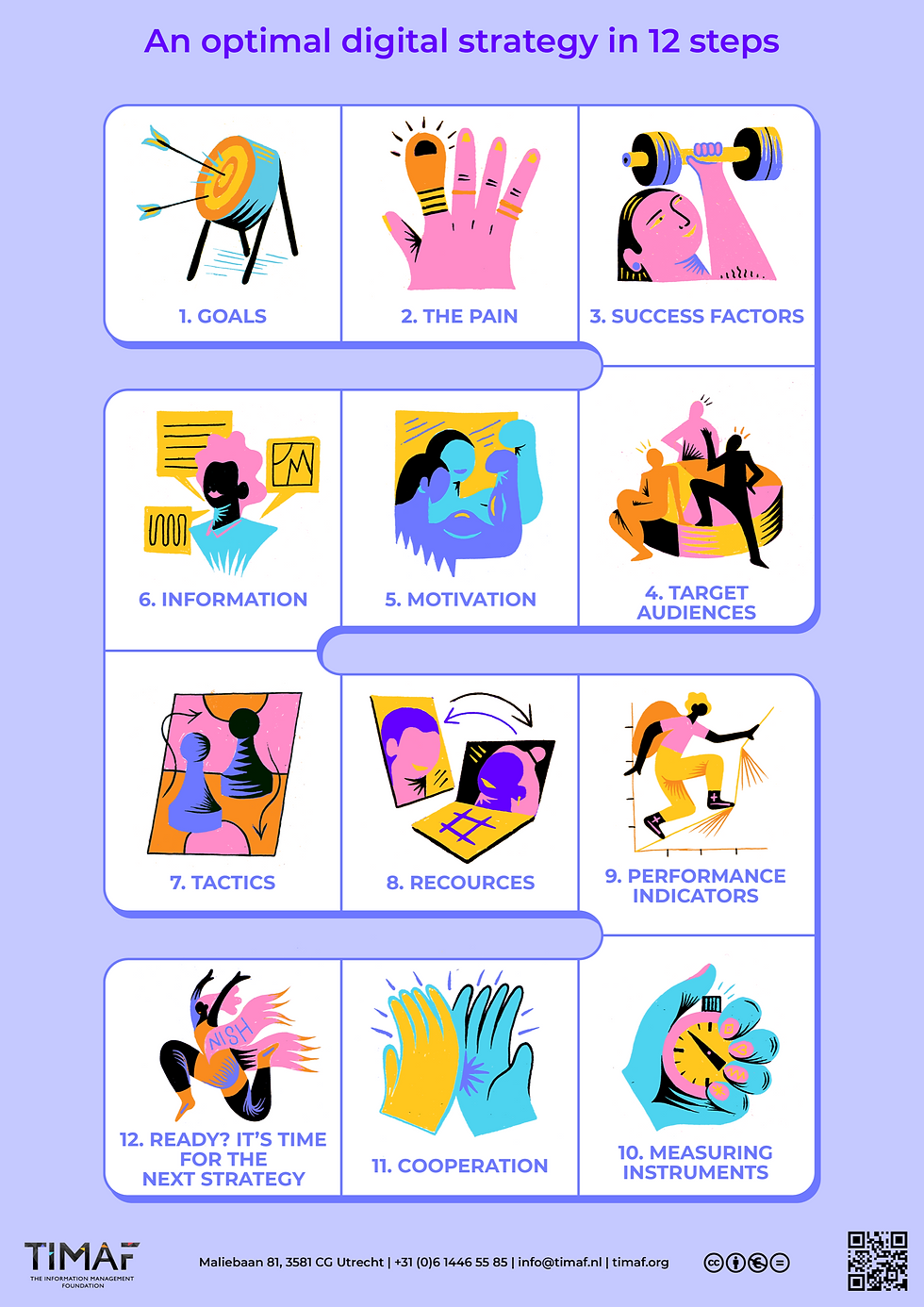Make your process improvement strategic with these six steps
- Erik Hartman

- Mar 28, 2024
- 3 min read
Updated: May 27, 2024
An organisation floats on processes. They deliver the value for the customer or citizen from which the organisation derives its right to exist. So improving processes is of strategic importance; it makes the organisation even better at delivering value.

But too often process improvement is not used as something strategic. Too often, the scope remains stuck in the operational improvement of process steps or the adjustment of processes because a (new) IT system is being implemented. And that is a missed opportunity.
A process strategy solves a problem
I wrote earlier that a good strategy solves a problem. This also applies to a strategic process improvement. The (end-to-end) process is improved to solve a problem. If that problem is an organisational problem and the improvement goes beyond adjusting or automating some process steps, then it is strategic.
My advice is to draw up a strategy at the very beginning of the process improvement initiative and use it, together with the team and other stakeholders, as a starting point throughout the improvement process.
Use the strategy game
To help organisations formulate and share strategies more easily, TIMAF developed the digital strategy game.
In the strategy game, you create a complete digital strategy in 12 steps. But for a process strategy, six steps are enough:
What is the organisation's goal?
What stands in the way of achieving that goal?
When is process improvement successful?
What are the indicators to measure success?
What measurement tools do we deploy to achieve this?
With whom should we collaborate to achieve this?
Using these move steps from the TIMAF strategy game, you make a process improvement initiative strategic. In every BPM training I provide, I teach trainees these six steps of the strategy game. They are always pleasantly surprised that they can make such a clear strategy so quickly.
From problem to solution
Using these six steps, you create a strategy that helps solve a problem. The organisation's goal (step 1) is hampered by a problem (step 2). So something has to improve (step 3). These three steps form the core of your strategy.
Then you determine the indicators you can use to determine whether the improvement is actually taking place (step 4). Then, of course, don't forget the measuring instruments (step 5). And because change is almost always a people business, you also need to determine in your strategy who you need to work with to make the improvement happen (step 6).
Adjust the strategy where necessary
While working out the process improvement, you will still come across all kinds of insights and changing circumstances. It is important that you immediately adjust the strategy accordingly. This way, the strategy remains current and valuable.
It is a recurring theme in training course evaluations: "Creating a BPM strategy was very valuable. I will apply this in every BPM initiative from now on". With these six steps, you have all the elements you need to get started. Hang this 'strategic manifesto' on the wall and use it daily as a starting point for your process improvement.
Join the BPM training in April
Do you also want to learn how to create a strategy for your process improvements?
Erik Hartman gives a 4-day BPM training course in April. You will learn how to use the strategy game to strategically optimise your processes.







Comments